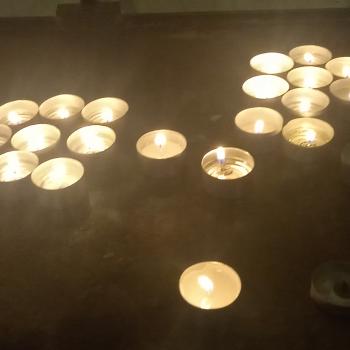What then distinguishes Christian art? I'd say it's the concept of the sacramentality of the ordinary: the belief that God is present in every experience of our daily lives. This includes experiences of evil and ugliness. It might sound paradoxical that artists can find beauty in ugliness; yet the beauty of the Cross is at Christianity's core — the beauty of sacrificial love. So Christian artists can represent beauty even in the brokenness of fallen humanity (a concept foreign to Islam). Christian sculptor Theodore Prescott even curated an art exhibit called A Broken Beauty. In an essay in the subsequent book of that title, he writes that "the exhibition will have accomplished its purpose if it helps us see the bodies before us as neighbors, not strangers."
Prescott articulates here a moral sense of beauty rather than a merely aesthetic one. As I noted at the start of this essay, Islam and Christianity concur in a concept of beauty that draws us into God's goodness. As Christian fiction writer Mary Kenagy Mitchell said in Image (#53), "the desire to make art comes partly out of a recognition that the world we know through our five senses is capable of bearing meaning, and what's more, that it is good."
Muslim Professor Nasr, as if continuing Mitchell's thoughts, writes: "There is something of the infinite in us; our being opens up to the infinite... Beauty is really a kind of echo of that infinity. Beauty for a moment breaks the bond of limitation, breaks the chain with which we are shackled, and therefore our soul thirsts for beauty.
Beauty as an echo of infinity. Can you hear it?




